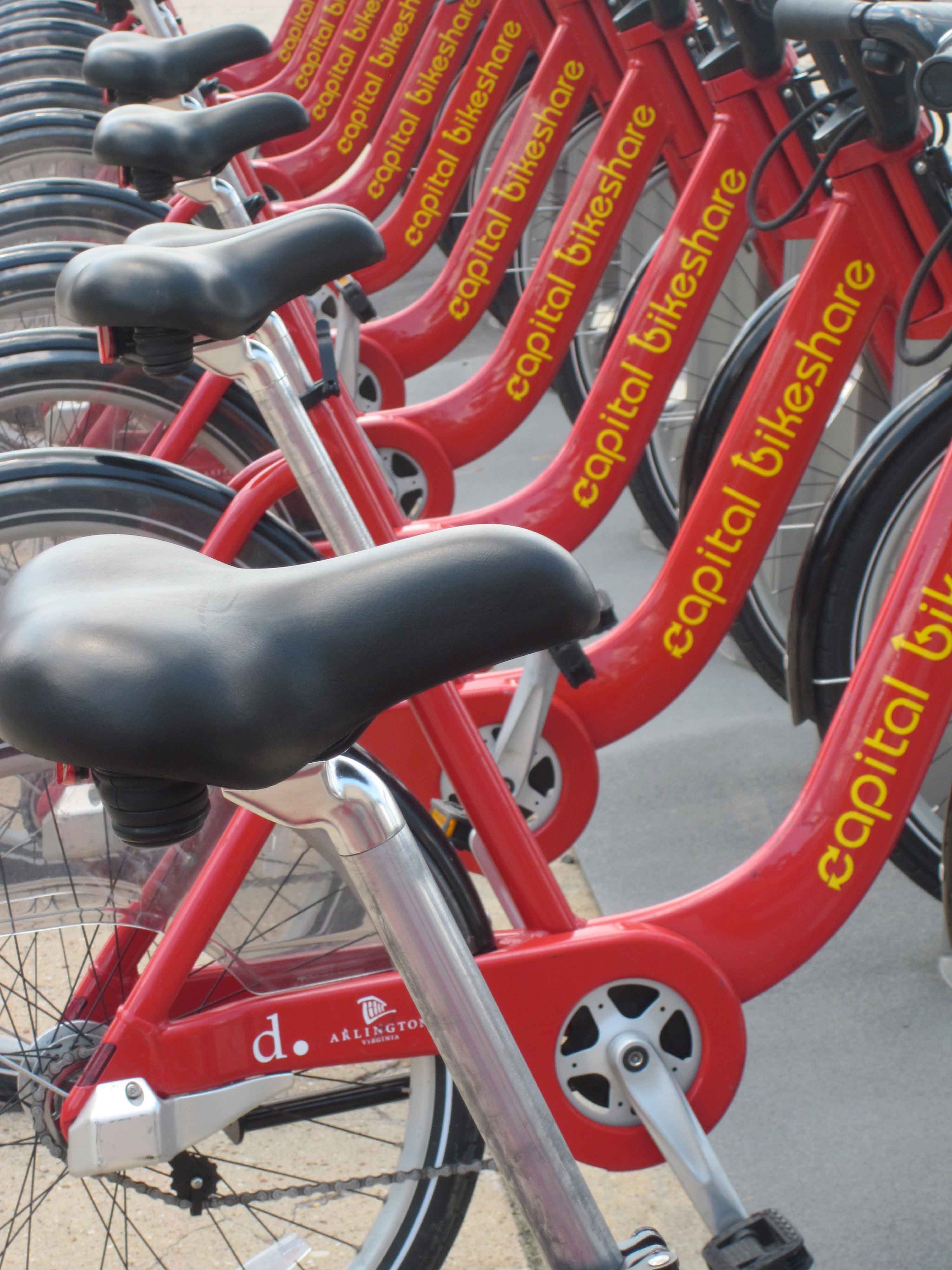Since 2008, when Washington, D.C. rolled out bicycles for short-term, commuter-oriented trips, it has grown to one of the largest systems in the U.S. With more than 175 stations and 1,700 bicycles, bikesharing has changed the way people get around in the city and inner suburbs.
The growth in bikesharing reflects a wave of interest in cycling – for commuting, weekend sight-seeing and even running errands. Its business model focused on convenience – inexpensive rentals, hassle-free memberships, flexible pick-up and return locations – taps into a need to get around quickly in traffic. It also provides a green option for environmentally conscious urbanites.
The bright red cruisers and rows of bike docks provided by Capital Bikeshare are now ubiquitous throughout the District as well as parts of Arlington and Alexandria.
For good reason. Bikesharing makes bike commuting easy. It takes a practice that involves a bit of planning – what clothes to wear for cycling and the office? where to park a bike safely for the day? – and removes the guesswork with outfit-friendly frames and easy drop-offs.
Bikesharing, adopted in droves by 20- and 30-something urban dwellers, is expanding throughout the continent, from Montreal to San Diego.
In a word, it’s hip.

New York’s bikeshare program, expected to launch in summer 2013, has ambitions to become the largest system in North America. Photo courtesy Transportation Alternatives
Montgomery County wants to be hip, too. As well as forward-thinking when it comes to transportation options.
Earlier this month, the County Council approved a Zoning Text Amendment (ZTA) that makes it easier for developers to build bikeshare stations. Previously, a developer who wanted to add a bikeshare station would need to file a site plan amendment, a process that requires review by planners and related agencies, then Planning Board approval. Typically, it takes months.
Since the ZTA was approved on November 13, developers wanting bikeshare at their projects may apply for building permits from the county, provide a copy of the permit to the planning director, and ride away. The Planning Board recommended approval of the ZTA in October, saying streamlining the building permit process for a bikeshare facility for approved site plans would speed along possibilities for Montgomery County to join the bikeshare system.
The Council also encouraged bikesharing by approving a bill allowing transportation impact taxes to go toward funding new bike stations. Transportation impact fees are paid by builders as part of the development review process.
Bikesharing requires strategic planning. Transportation planners have been working with the county Department of Transportation to map bikeshare locations mainly in down county and mid-county communities, where they would attract customers in central business districts, those using Metro and others trying to connect to DC bikeshare stations. As part of the mapping, they are acquiring easements on parcels that reserves space for future bikeshare stations. Their ambitious plan calls for rolling out bikeshare to Bethesda, Silver Spring, Takoma Park, Friendship Heights, Rockville and Shady Grove starting in the spring, adding 50 stations and 400 bicycles.
Bikeshare got more visible here when planners included it as an option in a list of public amenities in the new Commercial Residential Zone. Developers who want to build at higher densities in the CR Zone choose from a menu of public amenities, such as structured parking, public art, small business opportunities, vegetated roofs and other measures, like bikesharing.

